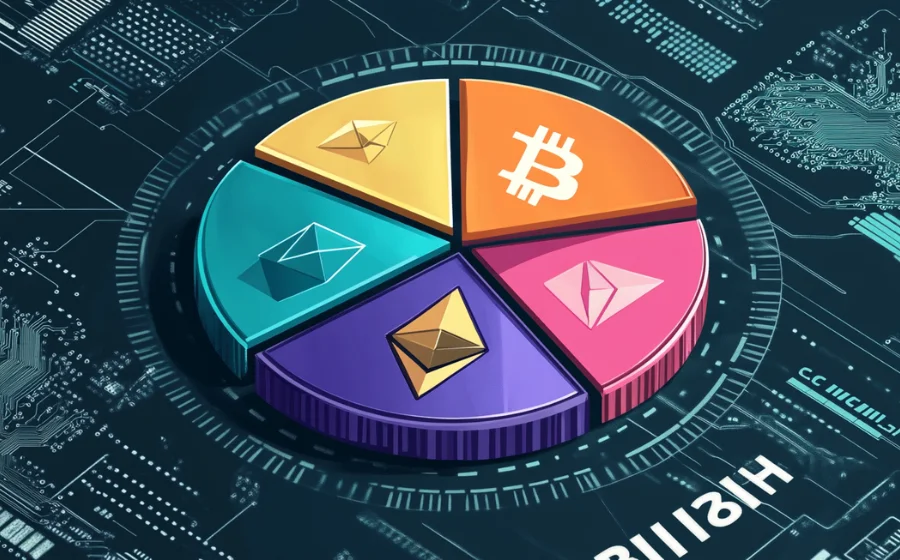
KEYTAKEAWAYS
- Liquidity pools are a key component of DeFi, enabling users to trade and earn rewards.
- Learn how they work, their benefits, and the risks involved in participating.

CONTENT
Liquidity pools are a cornerstone of decentralized finance (DeFi), allowing users to trade, lend, and earn rewards without relying on traditional intermediaries. As DeFi platforms grow, liquidity pools have become essential for providing the necessary liquidity to decentralized exchanges (DEXs) and other DeFi services. In this article, we’ll explore what liquidity pools are, how they work, and why they are a fundamental component of the crypto ecosystem.

WHAT IS LIQUIDITY?
Liquidity pools are collections of tokens locked in smart contracts that facilitate trading and other functions within decentralized platforms. In traditional finance, market makers provide liquidity by standing ready to buy or sell assets. However, in decentralized finance, liquidity pools replace the need for these centralized market makers, allowing anyone to participate.
Liquidity refers to how easily an asset can be bought or sold without causing significant price fluctuations. In traditional financial markets, liquidity is often provided by institutions, like banks or market makers, who hold large amounts of assets to enable quick and efficient trading.
In the world of cryptocurrencies, liquidity can be scarce, particularly on decentralized exchanges. This lack of liquidity can lead to issues such as slippage, where the price of an asset changes significantly between the time a trade is placed and when it is executed.
📌 How Liquidity Pools Solve the Liquidity Issue
Liquidity pools provide a decentralized solution to the liquidity problem. By allowing users to deposit their assets into a pool, these platforms ensure that there are always funds available for trading, borrowing, or lending. This removes the need for a centralized party to act as the market maker, democratizing access to liquidity.
HOW DO LIQUIDITY POOLS WORK?
Liquidity pools are a key innovation in DeFi, enabling peer-to-peer transactions in a decentralized manner. Let’s explore the mechanics of liquidity pools and how they operate.
✅ Liquidity Providers and Their Role
Liquidity pools rely on liquidity providers (LPs), who deposit pairs of tokens into the pool. In return for supplying liquidity, LPs earn a share of the trading fees generated by the platform. For example, on Uniswap, LPs contribute equal values of two tokens (like ETH and USDT) into a pool. When users trade on the platform, a small fee is collected, and a portion of this fee is distributed to the LPs as a reward for their contribution.
Becoming a liquidity provider is one way for crypto investors to earn passive income, as they benefit from the trading activity on the platform. However, it’s essential to understand that providing liquidity isn’t without risks, which we’ll cover later.
✅ Automated Market Makers (AMMs)
Liquidity pools are closely tied to Automated Market Makers (AMMs), which are algorithms that manage trading within decentralized exchanges. AMMs replace the traditional order book model used by centralized exchanges. Instead of buyers and sellers creating orders, the AMM matches trades using liquidity provided by the pool.
Uniswap, SushiSwap, and other popular DeFi platforms use AMMs to facilitate trades. The AMM determines the price of the tokens in the liquidity pool using mathematical formulas, such as Uniswap’s x * y = k formula, which ensures that the pool maintains balance between the two tokens as trades occur.
✅ Liquidity Pool Tokens
When users deposit tokens into a liquidity pool, they receive Liquidity Pool (LP) tokens in return. These LP tokens represent the depositor’s share of the pool and can be used to withdraw their funds at any time. Moreover, LP tokens can be used for other DeFi activities, such as yield farming, staking, or collateralizing loans.
LP tokens are a crucial part of the DeFi ecosystem, as they provide liquidity providers with proof of their contribution and unlock additional earning opportunities in the DeFi space.
>>> More to read: What is AMM & How Does It Work?
BENEFITS OF LIQUIDITY POOLS
Liquidity pools have become an integral part of DeFi because they offer several key benefits, both for liquidity providers and users of decentralized platforms.
1️⃣ PERMISSIONLESS ACCESS
One of the core principles of DeFi is permissionless access, meaning anyone with a crypto wallet can participate in liquidity pools without needing approval from a central authority. This opens up opportunities for people worldwide to earn passive income and participate in financial activities that were previously inaccessible to them.
Since DeFi is decentralized, users are not limited by geographic location or restricted by traditional financial institutions. This democratization of finance is one of the key reasons why liquidity pools have gained popularity.
2️⃣ YIELD GENERATION
Liquidity providers are incentivized to deposit their assets into pools through the potential for earning passive income. When traders use the liquidity in the pool, they pay fees, which are then distributed proportionally to LPs based on their contribution. This provides LPs with a steady income stream, especially during periods of high trading volume.
In addition to earning fees from trades, LPs can further increase their yields by participating in yield farming programs. In these programs, LP tokens are staked in return for additional rewards, often in the form of governance tokens or native platform tokens.
3️⃣ LOWER SLIPPAGE
Liquidity pools can reduce slippage, which is the difference between the expected price of a trade and the price at which it is executed. With larger liquidity pools, the impact of a single trade on the token price is minimized, ensuring a more stable trading experience. This is particularly important for large transactions, which could otherwise cause significant price movements on illiquid markets.
>>> More to read: What is Liquidity Mining in Crypto?
RISKS OF LIQUIDITY POOLS
While liquidity pools offer several advantages, they are not without risks. It is essential for potential liquidity providers to be aware of these risks before contributing their assets to a pool.
✅ IMPERMANENT LOSS
Impermanent loss occurs when the price of one or both tokens in a liquidity pool changes significantly. This can lead to a situation where the value of the tokens in the pool is lower than if the user had simply held the tokens in their wallet.
For example, if a user provides liquidity for an ETH/USDT pool and the price of ETH doubles, the user might end up with less ETH and more USDT due to the automated balancing of the pool. If they withdraw their funds at this point, they may experience an impermanent loss compared to holding onto their ETH.
✅ SMART CONTRACT VULNERABILITIES
Liquidity pools are governed by smart contracts, which are self-executing pieces of code. While smart contracts are designed to be secure, they are still susceptible to bugs or exploits. In the past, several high-profile DeFi projects have been hacked, leading to significant losses for liquidity providers.
Before contributing to a liquidity pool, it’s crucial to assess the security of the smart contract and the platform behind it. Audited smart contracts and platforms with a good reputation can help mitigate this risk.
✅ MARKET VOLATILITY
Cryptocurrency markets are notoriously volatile, and this volatility can impact liquidity pools. Price fluctuations in the tokens in the pool can lead to impermanent loss or reduced profitability. Additionally, during periods of market instability, trading volume may decrease, reducing the fees earned by LPs.
>>> More to read: What is DeFi? A Comprehensive Guide to Decentralized Finance
POPULAR LIQUIDITY POOL PLATFORMS
Several DeFi platforms have pioneered the use of liquidity pools, each with unique features and advantages.
🚩 UNISWAP
Uniswap is one of the most well-known decentralized exchanges and was among the first to popularize the use of liquidity pools. Its user-friendly interface and automated market maker (AMM) system have made it a go-to platform for both traders and liquidity providers. With high trading volumes and numerous token pairs, Uniswap remains a dominant player in the DeFi ecosystem.
🚩 SUSHISWAP
SushiSwap began as a fork of Uniswap but has since developed its own identity and unique features. One of its distinguishing characteristics is the additional rewards offered to liquidity providers through its native governance token, SUSHI. SushiSwap continues to attract liquidity providers with its innovative reward structure and governance model.
🚩BALANCER AND CURVE
Balancer and Curve offer more specialized liquidity pools compared to Uniswap and SushiSwap. Balancer allows for customizable pools with multiple assets, while Curve is optimized for stablecoin trading, reducing slippage and impermanent loss for stablecoin pairs. These platforms cater to more specific use cases, attracting different types of liquidity providers and traders.
>>> More to read: From Beginner to Smart Investor: Stop Being the Market’s ATM
FUTURE OF LIQUIDITY POOLS
The future of liquidity pools looks promising, with several innovations on the horizon.
▶ CROSS-CHAIN LIQUIDITY POOLS
As blockchain interoperability improves, cross-chain liquidity pools are becoming a reality. These pools allow users to provide liquidity across different blockchains, creating more liquidity opportunities and enhancing the efficiency of DeFi markets. Platforms such as Thorchain are already pioneering this concept.
▶ REGULATORY CHALLENGES
As liquidity pools continue to grow in popularity, they are likely to face increasing scrutiny from regulators. Governments worldwide are working to establish frameworks for DeFi, which may impact how liquidity pools operate in the future.
▶ INNOVATIVE USE CASES
New use cases for liquidity pools are emerging, including tokenized real-world assets, prediction markets, and more. As DeFi expands, liquidity pools will likely evolve to support a broader range of financial activities beyond just trading and lending.
CONCLUSION
Liquidity pools are a fundamental part of the decentralized finance ecosystem, offering users the ability to trade, lend, and earn rewards without the need for centralized intermediaries. While they provide numerous advantages, it’s crucial for liquidity providers to understand the risks involved. As DeFi grows, liquidity pools will continue to play a vital role in shaping the future of finance, providing new opportunities for users worldwide.

















